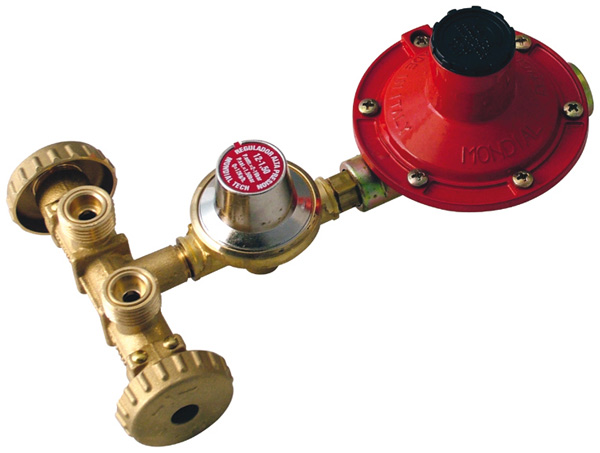General description of the mini control units
Mini control units manage the pressure input / output from the collector, allowing nominal operation of the device

Mini control units are valves capable of modifying the flow of compressible and incompressible liquids, allowing adequate management of the output pressure.
These are devices that required great efforts by Gnali Bocia to be designed and patented. Mini control units are generally made up of three basic components that determine the use for which they were designed: the flow limitation element, the flow load element and the measuring element.
The flow limitation element consists of a valve that may be a butterfly valve, a ball valve (also known as a globe valve), a poppet valve or any other type of valve that allows flow restriction. The flow load element allows the mini control unit to exploit flow limitation through a piston, a spring or an actuator of any type that sets the closing mechanism and/or the flow limitation in motion.
Finally, the most important element for understanding the operation of mini control units is the measuring element: the component assesses the mass flow rate passing through the pipe, using a balance of mass flows.
The pressure regulation can be single-stage or two-stage: the functional scheme is the same, only the regulation differs when the it is one stage or two stages. The use of a two-stage pressure regulation allows the reduction of stresses specific to a single stage regulator.
These are devices that required great efforts by Gnali Bocia to be designed and patented. Mini control units are generally made up of three basic components that determine the use for which they were designed: the flow limitation element, the flow load element and the measuring element.
The flow limitation element consists of a valve that may be a butterfly valve, a ball valve (also known as a globe valve), a poppet valve or any other type of valve that allows flow restriction. The flow load element allows the mini control unit to exploit flow limitation through a piston, a spring or an actuator of any type that sets the closing mechanism and/or the flow limitation in motion.
Finally, the most important element for understanding the operation of mini control units is the measuring element: the component assesses the mass flow rate passing through the pipe, using a balance of mass flows.
The pressure regulation can be single-stage or two-stage: the functional scheme is the same, only the regulation differs when the it is one stage or two stages. The use of a two-stage pressure regulation allows the reduction of stresses specific to a single stage regulator.
19/02/2014
I contenuti di questo sito non hanno carattere di periodicità e non rappresentano 'prodotto editoriale'.








